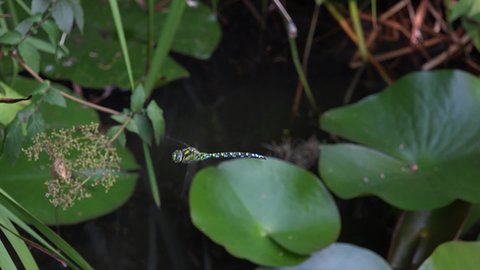In Flight
Thedragonflythatyouseeflittingoverfieldslooksdifferentfromitsnymphform.Themaledragonfly’sblackbodyisabout70millimeters(2.8inches)long.Itisdottedwithdashesofapplegreenandturquoise.Itsbrightcolorsaredesignedtoattractamate.Its
twosetsofwingsstretchout
110millimeters(4.3inches)fromits body.
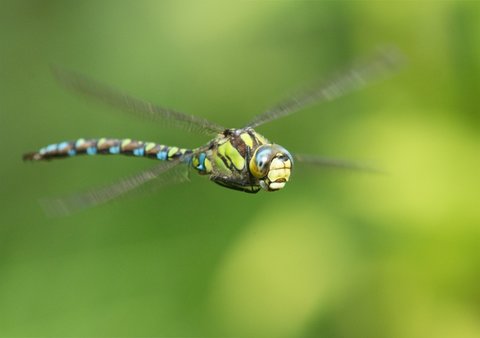
Thismalesouthernhawkerdragonflyisin flight.
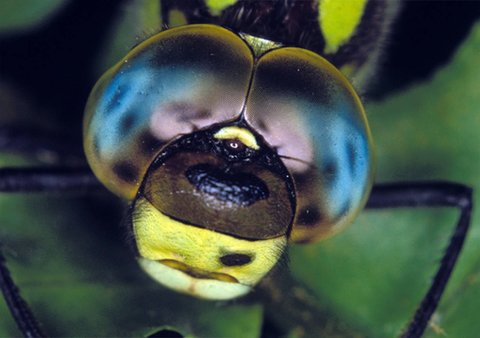
Anadultsouthernhawker'seyeshavethousandsof lenses.
Intheinsectworld,thedragonfly’ssightisunmatched.Itstwocompoundeyesaremadeupofthousandsofindividuallenses.Thefrontofeacheyefocusesonforwardflight.Thetopofeacheyesearchesfor prey.
Dragonfliesalsohavethreesimpleeyes.Eachhasasinglelens.Theseeyesformatrianglebetweenthecompoundeyes.Nervesconnectthemtothedragonfly’sflightmuscles.Theygiveinformationaboutthedragonfly’spositionrelativetoits prey.
Thesouthernhawkerusesitstwosetsofwingstoflyforward,backward,orsideways.Itcanbeatitswingstogetherormoveeachoneseparately.Tofly,thewingstwistinafigure-eightmotion.Itcanflyupto54kilometers(34miles)an hour.
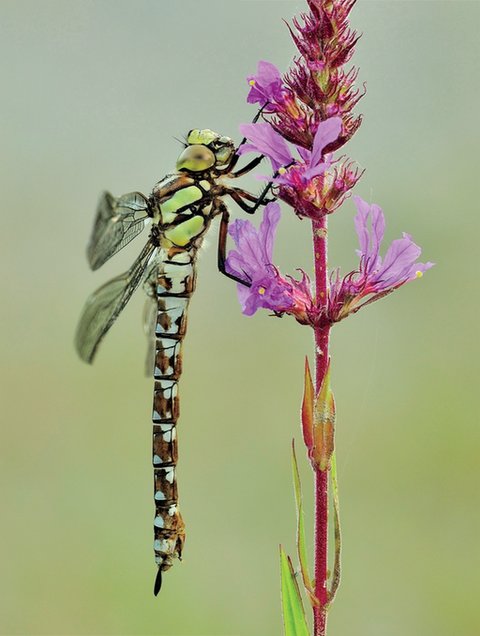
Dragonflieshavesixlegs,butmostcannot walk.
Thissouthernhawkerisonthehuntforflying insects.
FocusedHunter
Whenthesouthernhawkerhunts,itbecomesadeadlypredator.Itssuccessrateisabout95 percent.
Itspreyiscaughtandeaten“onthewing.”Thatmeans,itiscaughtwhilethedragonflyisinflight.Theabilitytocatchpreywhileflyingattopspeedsisacomplicated process.
Thedragonflyhastobeabletopredictwhereitspreywillbe.Itmustfigureoutthedistance,thedirection,andthespeedofitsprey.Inmilliseconds,thedragonflyplotsits course.
Thedragonflyholdsitslegsforward.Thelongspinesonitslegsgriptheprey.Thenthedragonflybitesoffanddiscardstheprey’swingsbeforeeatingits body.
Eatingandmatingare anadultsouthernhawker’sonlytwojobs.Withintwomonths,theadultsdie.Theireggsarewaiting,though,forthelifecycletobegin again.
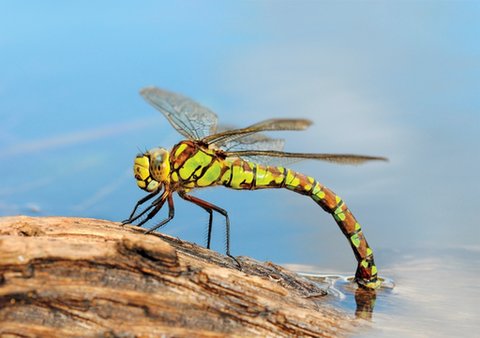
Femaleslaytheireggsinthe water.
